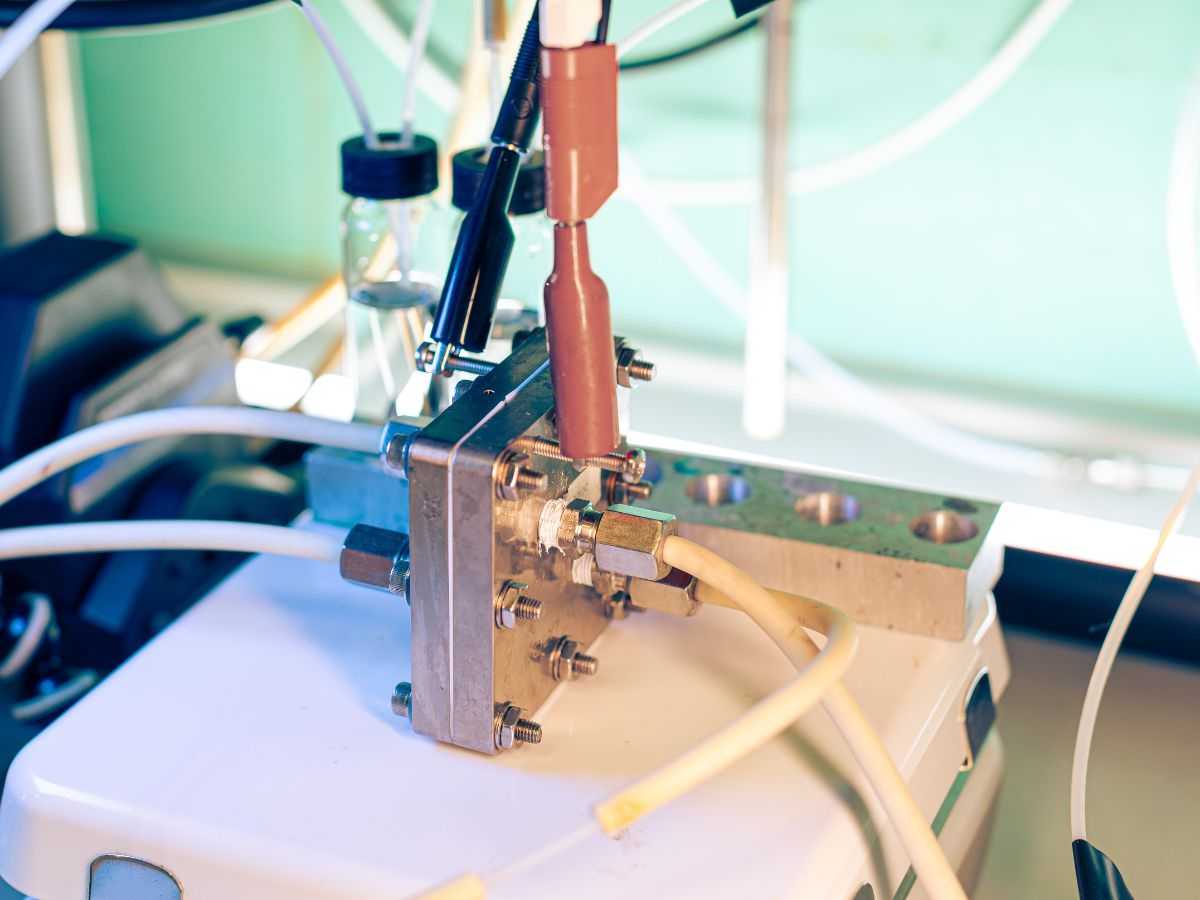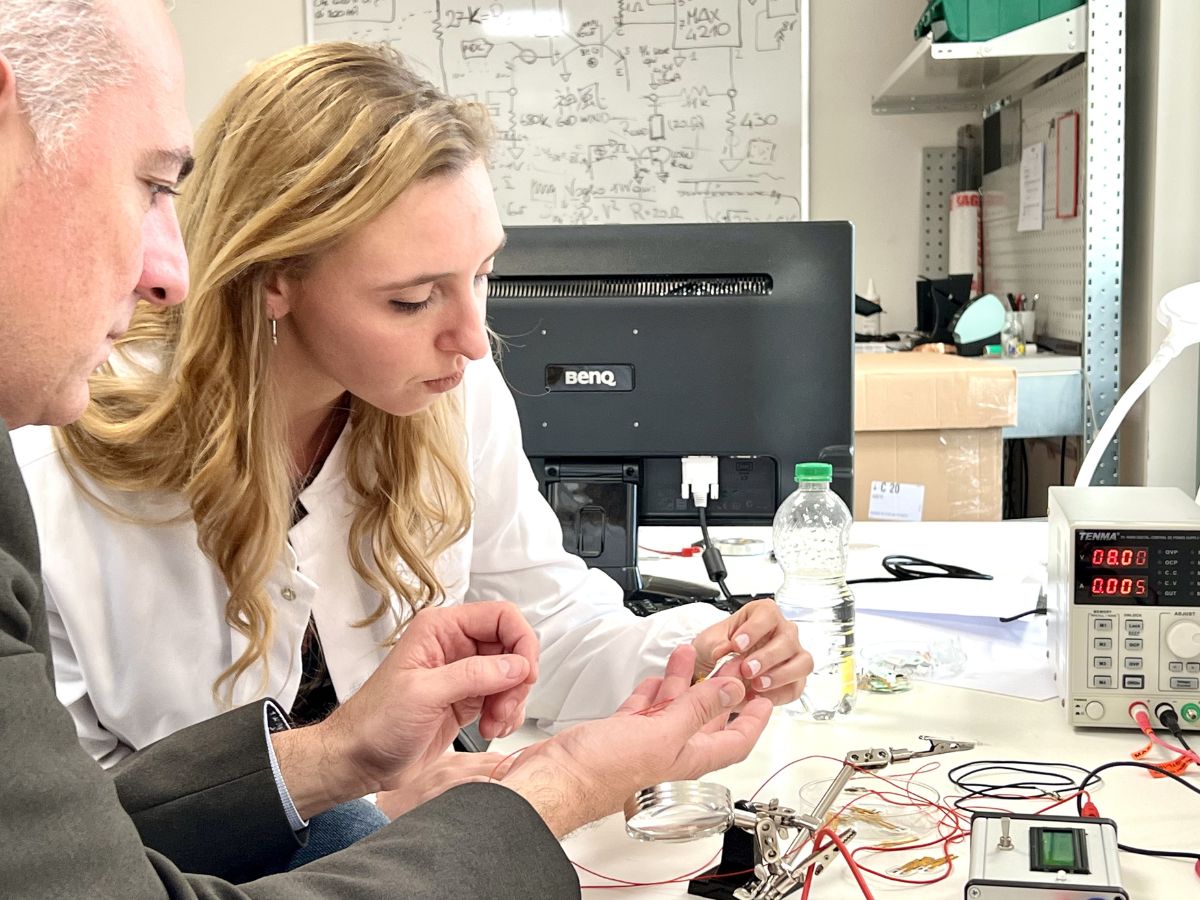Producing energy from small vibrations, a wind blow or a heartbeat is now a reality, thanks to the research of the IIT Center in Lecce and the start-up Piezoskin.
The IIT researchers have been working for years on the development of new tactile devices that are not only sensitive to touch (for example the iCub skin), but to different stimulations caused by small vibrations, blows of air or movements. Combining this area of research with the study of energy harvesters, the research team of the IIT Center for Biomolecular Nanotechnologies (CBN) has developed an innovative method to recover clean energy from air or liquid flows using the piezoelectric properties of new composite and flexible materials, without any negative impact on the environment.
Inspired from the marine world, especially from the lateral line of fish (the sensorial apparatus that allows them to perceive the physical characteristics of the environment they are swimming into), the new invention consists of a flexible and very versatile matrix of piezoelectric micro-flags or mini-leaves, built with recyclable and biocompatible materials. The active part consists of a flexible polymeric support (Polyamide) over which a crystalline inorganic material with intrinsic piezoelectric properties (aluminium nitride) has been applied.
«Depending on the applications, its dimensions can range from the nanometres up to surfaces of several square metres – explains Massimo De Vittorio, director of the Center and coordinator of the study – over these years we have been working on how to synthetize and apply more efficient, flexible and performing piezoelectric materials to micro and nano-devices. Piezoelectric materials are able to transform mechanical energy caused by pressure, deformation or any mechanical stress into electrical energy.
Traditionally, the support for piezoelectric sensors and transducers has always been silicon, a too rigid material, whose deformations are sufficiently elevated only at specific frequencies. We thought to substitute silicon with a soft and flexible organic material and we developed a hybrid organic/inorganic composite that combines the properties of a piezoelectric semiconductor with the flexibility of polymeric materials. This has allowed us to develop devices that work efficiently independently from the working frequency, tactile sensors with structure and functions similar to human skin, sensitive to multiple stimuli such as pressure, vibration and slippage».
The researchers created a flexible matrix, linkable to the Eolic model, to overcome the rigidity of piezoelectric systems and satisfy the basic requisite of piezoelectricity: in order to generate energy, it needs a deformation of the structure; this is now possible thanks to the particular flag-leaf shape. When a gas or liquid flow hits these structures, it generates a mechanical deformation in the system that can be transformed in electrical energy. These transformations do no generate any harmful emissions.
Applications are numerous. These mini leaves can be integrated in any environment and can take advantages of liquid turbulences, flows and movements. From houses’ roofs to industrial pipes, from public gardens to the ocean floor, they can be applied to different surfaces, in a complete non-invasive way, becoming integrative part of the landscape. Besides, this innovative technology can be inserted into devices implantable in the human body in order to increase pacemaker autonomy or to power remote or portable monitoring sensors that control, for example, the quality of air, water, sport performances and vital parameters, reducing the need for changing their batteries.
Flexible piezoelectric technology has also become a start-up: Piezoskin. The IIT Center for Biomolecular Nanotechnologies in Lecce – knowing far too well that nowadays in Italy if you patent an invention and wait for a developer on an industrial level, you might as well never see it reach the market – preferred to enter the fray directly.
«Unfortunately, in Italy nowadays we risk that developed and patented technologies never see any applications on the market and remain on the shelf forever – explains De Vittorio – for several reasons: for example an imperfect match between offer and demand of innovation and new technologies, communication problems, different strategies and points of view. We therefore risk that we keep producing new technologies that however never transfer into marketable products. On the other side, creating a start-up, besides fostering an entrepreneurial culture among the youngsters and new jobs, we can show the product prototypes to companies, create partnership and reach the market: requisites that facilitate the relationship with the industry, the territory and the market. Start-ups have a privileged relation with the lab that created them and hopefully in the future they will support public research, therefore coming to a full virtuous and economic circle, where it is less likely that new technologies remain unused »
Piezoskin offers a clear example of how public research in Italy, in order to leave the lab and become an applicable and tangible reality, must nowadays find new business strategies. Creating innovative start-ups allows research results to reach the market, optimising the interaction between the research institute and the industry.
This is not a new economic-technological approach for the CBN research centre of the Istituto Italiano di Tecnologia: before Piezoskin, the IIT created two other start-ups, HiQ-Nano (High Quality Nanoparticles) in the nanoparticles field and OptogeniX, in the optogenetics area. Despite being extremely young, these companies have already reached the market with technologically advanced products and customers from all over the world.



